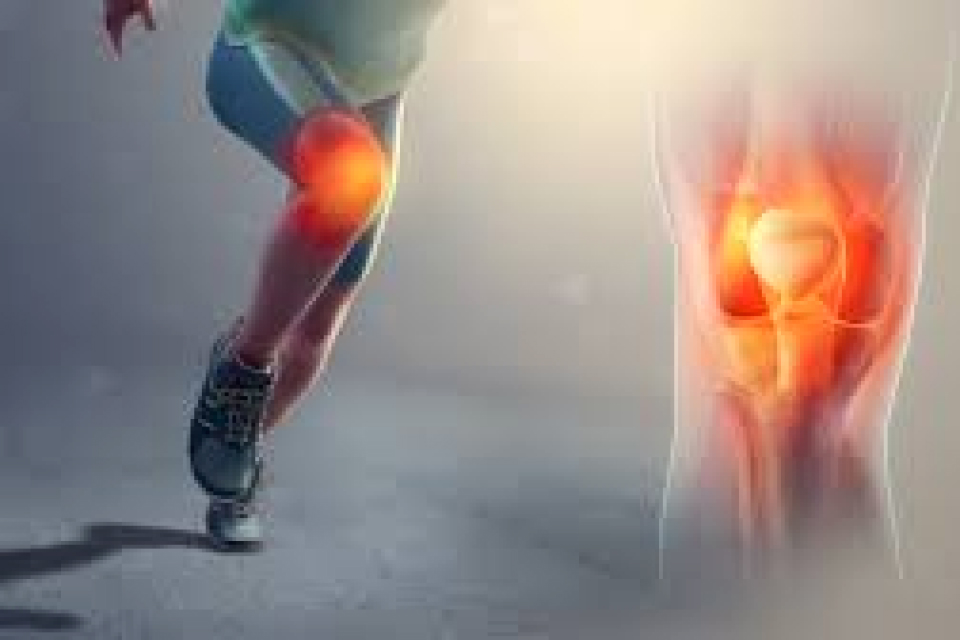What is the meniscus ?
So many of us go through life without getting to know our bodies, putting them through daily rigors and pushing them to the absolute limit until something (usually pain), stops us in our tracks.
It often takes pain for us to pause and listen to our body's signal that something is wrong. This is a turning point for many as we are motivated to find the cause, fix the problem and get back to our normal, pain free lives. This is the crucial moment where we seek the help of a professional who will not only take us on journey of healing, but hopefully one of education as well.
What does education have to do with knee pain you ask? Everything! Allow me to explain. In my experience as a physiotherapist, I frequently encounter patients presenting with knee pain. By the end of their journey, not only are they been pain-free, but they also understand why the knee pain presented itself in the first place. Most importantly, they learn how to work going forward to ensure it doesn't happen again. That's the education!
Meniscus tears are one of the most common knee injuries we see in the clinic. The people who come to me often complain of pain, stiffness, swelling, catching or locking of the knee.
What is the meniscus?
Before I get into how you can manage your pain and your life with a meniscus tear, let's first talk about what the meniscus is. The lateral and medial menisci are crescent shaped, jelly like structures that collectively cover approximately 70% of the articular surface of the knee. The menisci play a very important role in helping to distribute weight equally along the joint, as well as to stabilize the knee and act as shock absorbers in your knee joint. These wedge shaped structures are found right at the periphery of the joint and act as a cushions between your femur (thigh bone) and your tibia (shin bone). Sometimes they can wear down or tear as a result of some physical activity. The inner portion of the adult meniscus is avascular meaning it has no blood vessels and it's called the white-zone. The outer portion also known as the red-zone has a good blood supply and nerve endings which means that when it is damaged, we can feel this as pain in the knee.Could I have a torn meniscus?
Maybe. If that's a question you still haven't been able to answer, think back to the time when you first had knee pain, and think about exactly what you were doing and that should give you a good clue. An isolated meniscus tear can occur due to rotational forces across the joint, especially when there is increased load on the meniscus. This could happen when you're kneeling, squatting, jumping, lifting or carrying heavy weights or during activities where you need to accelerate or decelerate very quickly. A traumatic impact can cause a tear in the meniscus as well as damage to important knee ligaments like the ACL (Anterior Cruciate Ligament and the MCL (Medial Collateral Ligament).Are all meniscus tears equal?
The short answer is, no. The long answer is, there are different types of meniscus tears and they are categorized by both shape and location when visualized on MRI Meniscal tears can be classified according to their location in relation to the vascular supply, their position, and their appearance and orientation. Tears in the red-zone have the greatest chance of healing while those in the white zone generally need some external help in order to improve. Once we have identified that you have a meniscus tear, your physiotherapist or care provider will look at some other details to help you understand the treatment available and how long it will take. Tears are classified by length, depth and pattern. The tears can be vertical, horizontal, angled, with a flap or a combination of all of these. You'll need an MRI to understand your particular injury most accurately. Studies have shown that trained radiologists have a much higher specificity and sensitivity for diagnosing meniscal tears . With clinical examinations having low accuracy in diagnosis, MRI has become the gold standard investigation for meniscal tears.Should I have a surgery?
You might like to consider meniscus surgery if the following points apply to you.➔ If you are aiming to compete at a level for a physically demanding sport
➔ If you have tears in the white zone or have a flap tear that's not allowing complete range of movement.
➔ If conservative management has not helped after 1 year.
Surgical management of meniscal injuries has taken rapid strides in recent times. However, the role of the commonest surgery performed worldwide for meniscal tears, APM (Partial Menisectomy ) remains controversial. Over the last two to three decades, great emphasis has been laid on meniscal repair and preservation. The aim is to preserve as much of the meniscus as possible and to avoid removing it. Various studies have compared the outcomes of partial meniscectomy (partial meniscus removal) with meniscal repairs. While meniscectomy has better pain relief as opposed to repair in the early stages, repairs are based on the principle of regeneration and hence have better outcomes at long-term follow-up.
What do I mean by Conservative Management?
Conservative management is when we don't do surgery and instead work towards strengthening all major muscle groups of the lower limb along with the trunk and core stability exercises. Your physiotherapist is the best person to carefully and safely guide you through a knee rehabilitation program with the aim or restoring full range of motion to your knee and having you pain free again.It's important to remember that meniscus rehab is a Marathon and not a Sprint. Improvements can be gradual and take 3-6 months or even longer, however in the majority of cases, with a little hard work and commitment, surgery can be avoided. So if you're suffering with the pain of a sore knee and don't know what to do, make an appointment with your friendly physio and have a chat about knee rehab. You never know, you might just be able to avoid that surgery and your meniscus injury might actually be the catalyst for fitter, stronger, smarter you!



